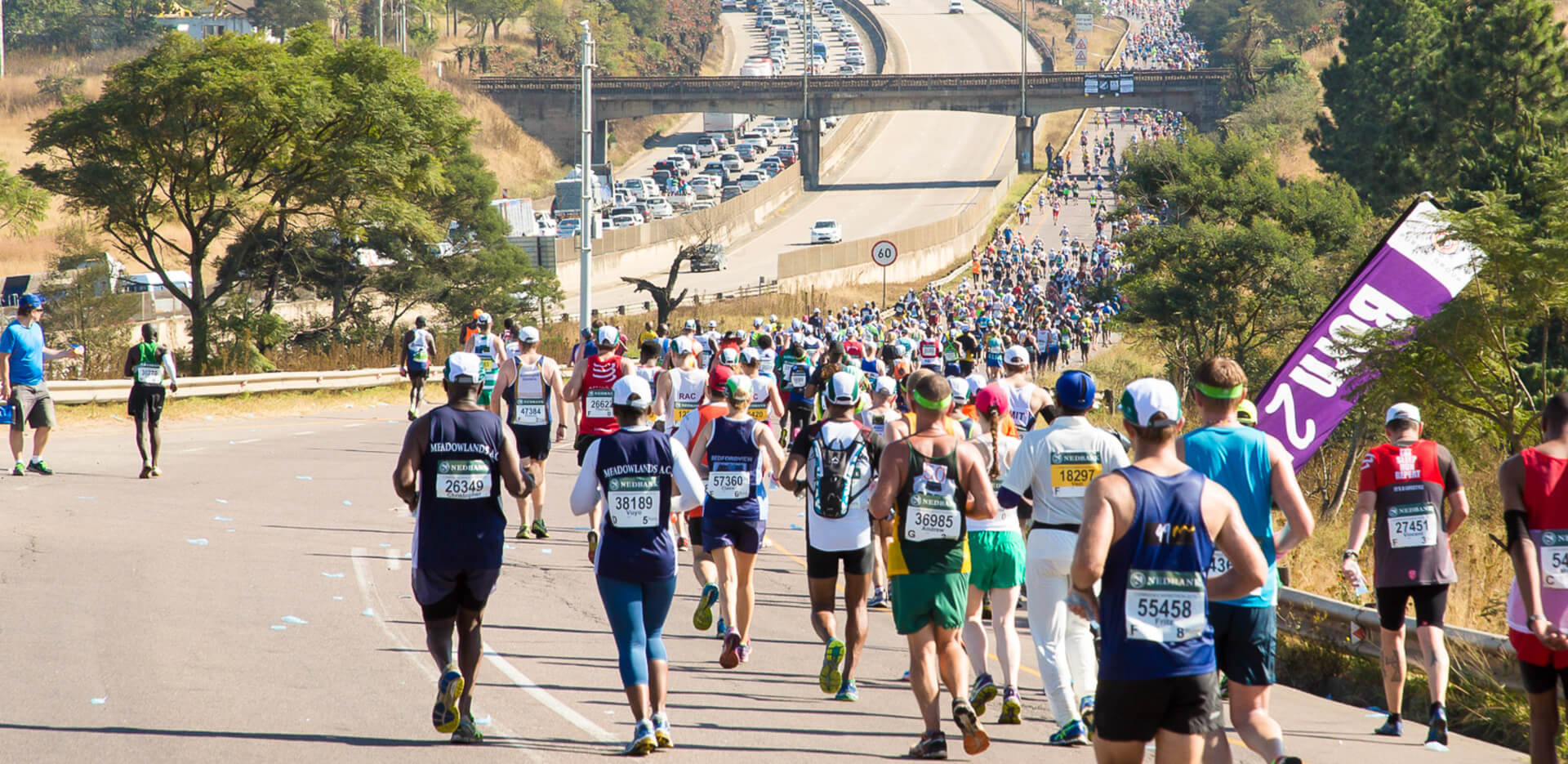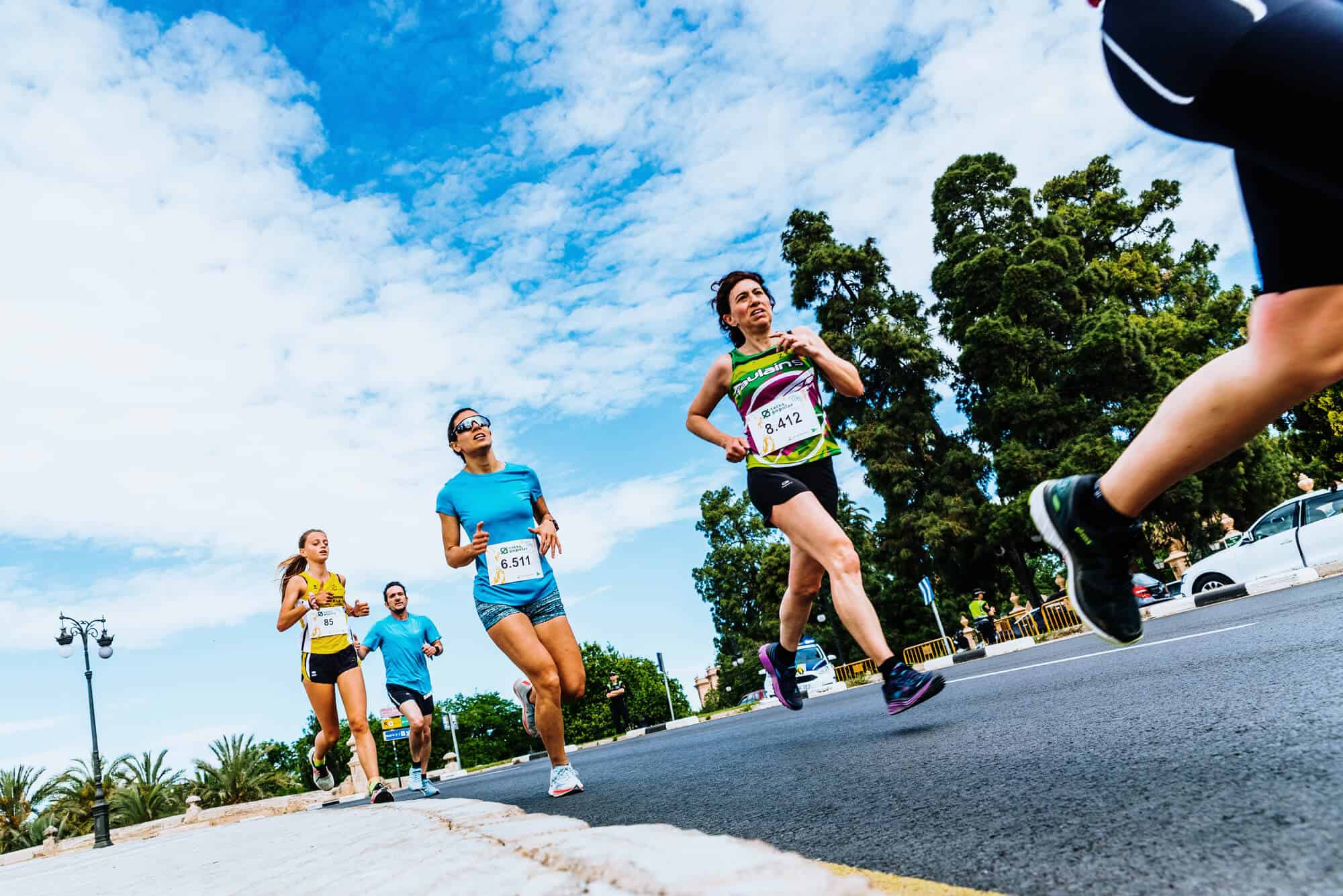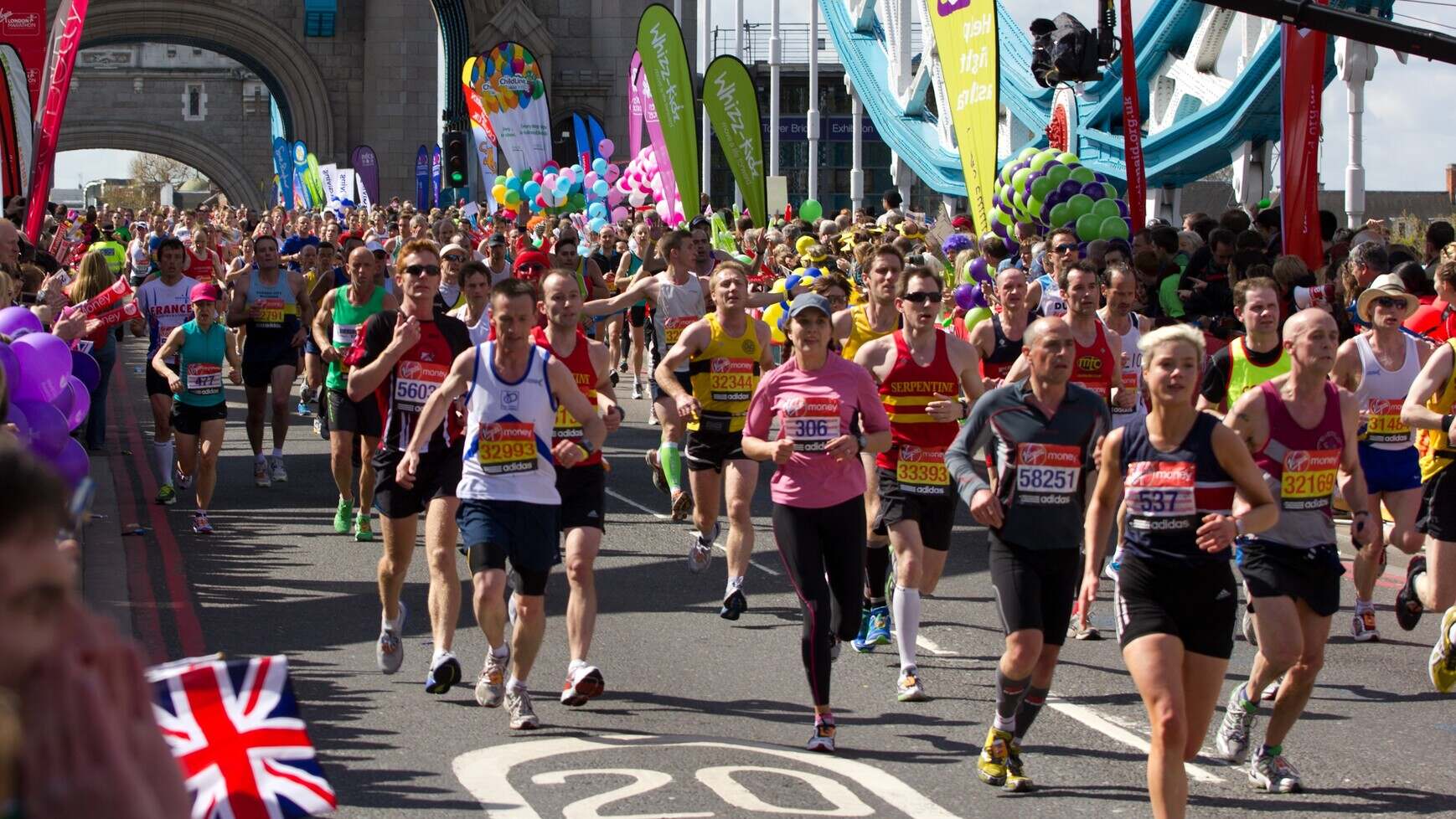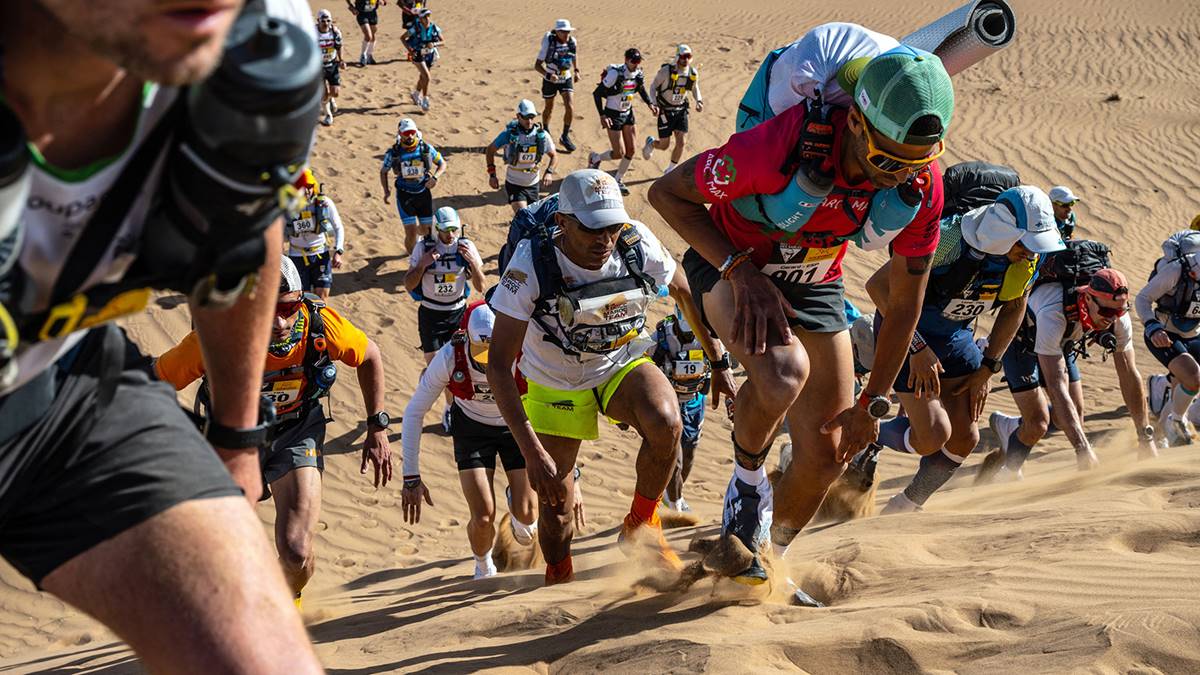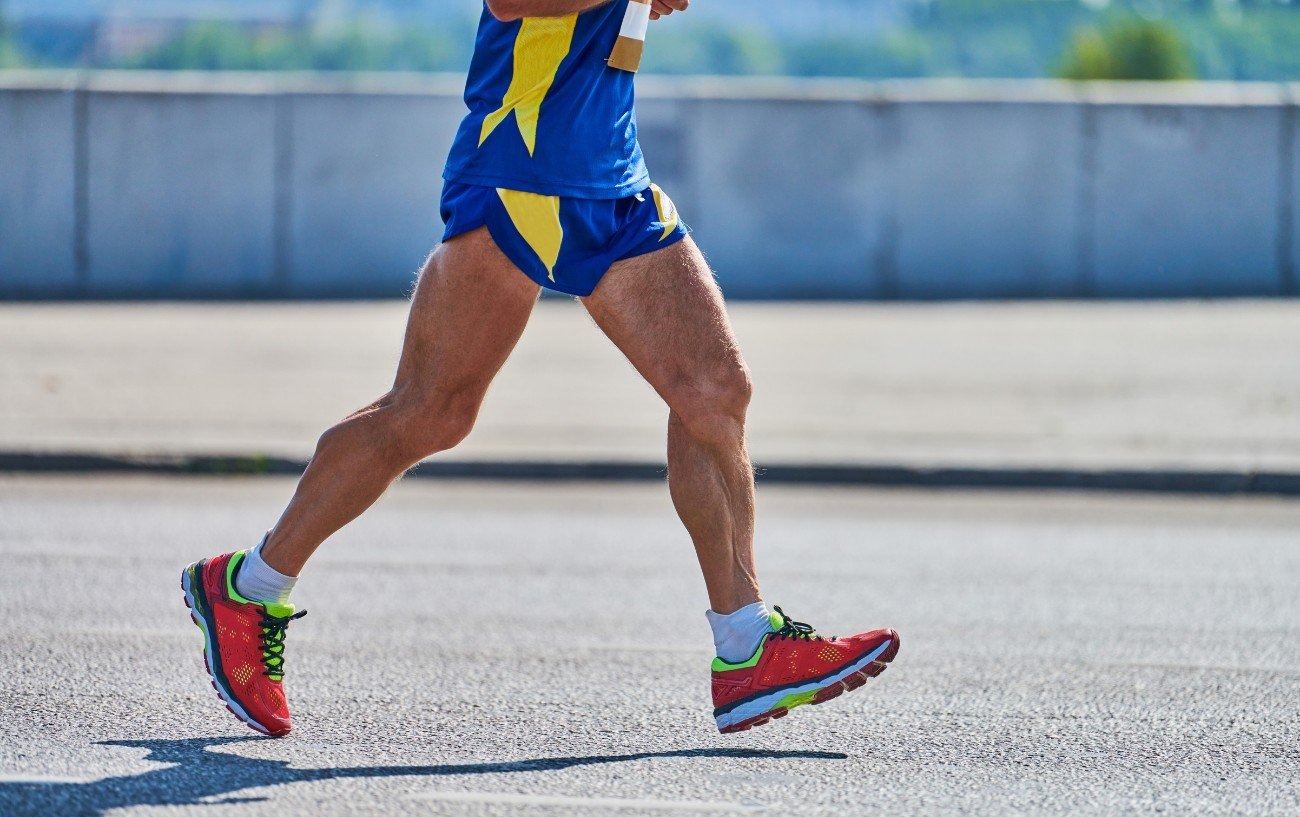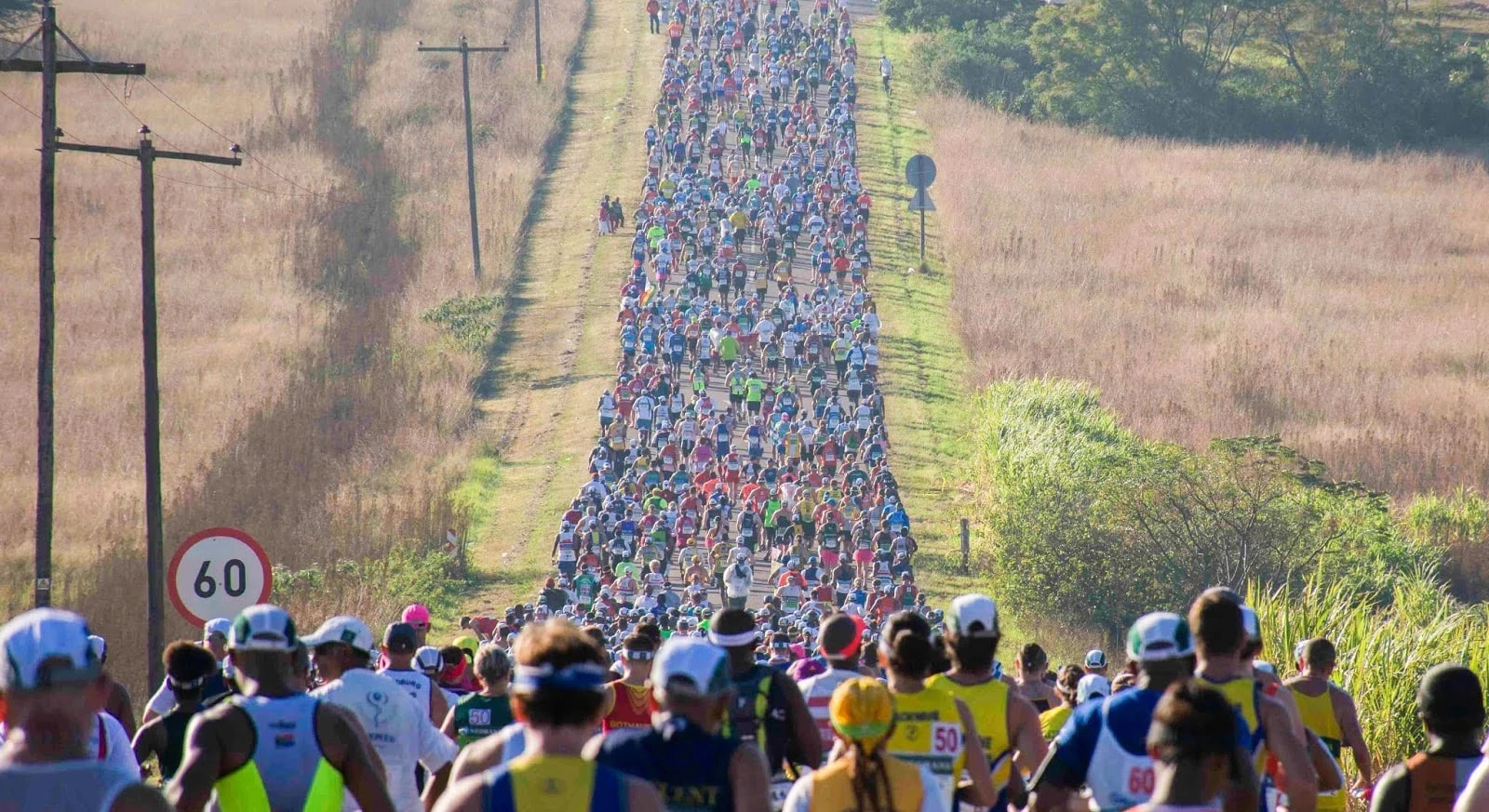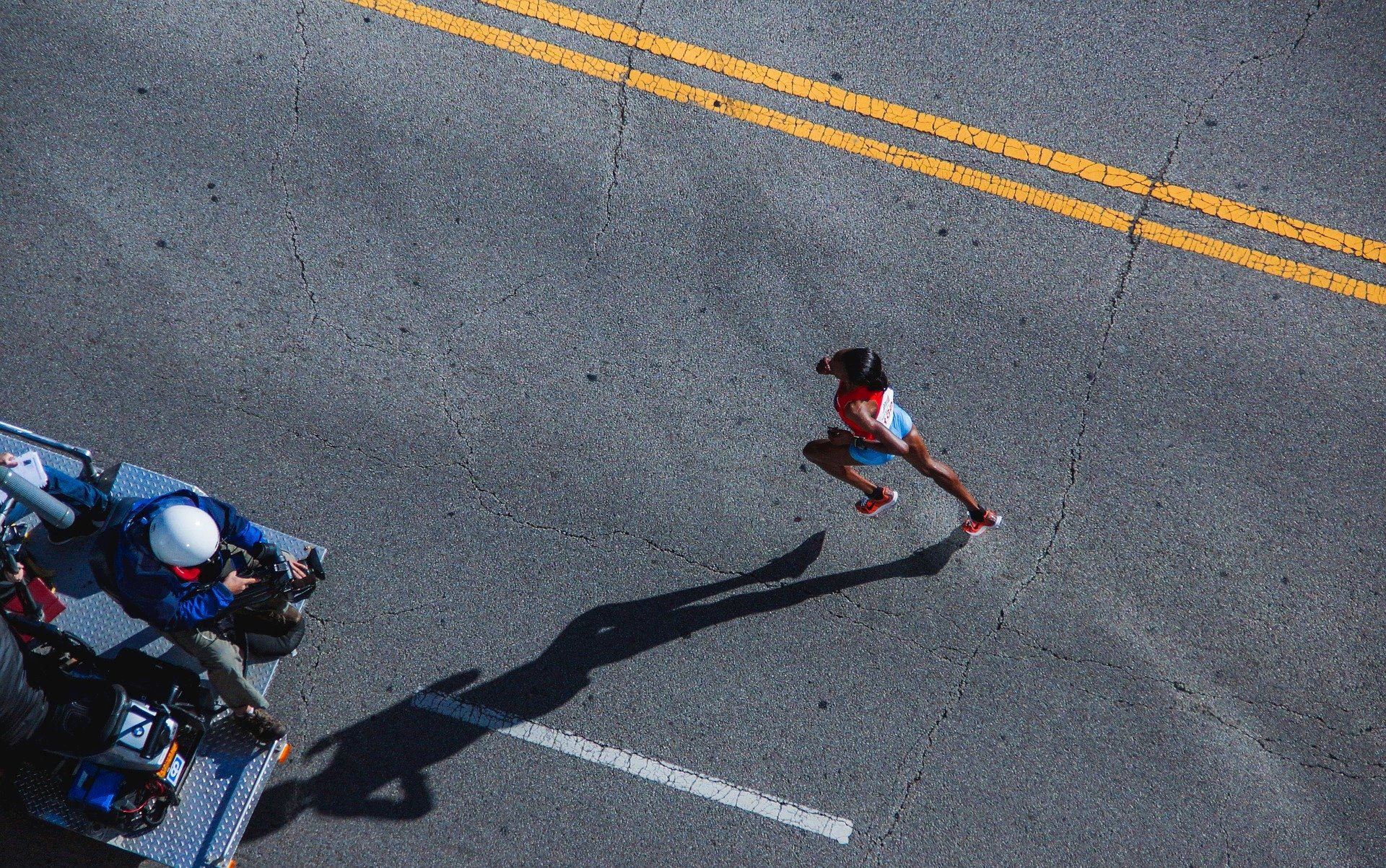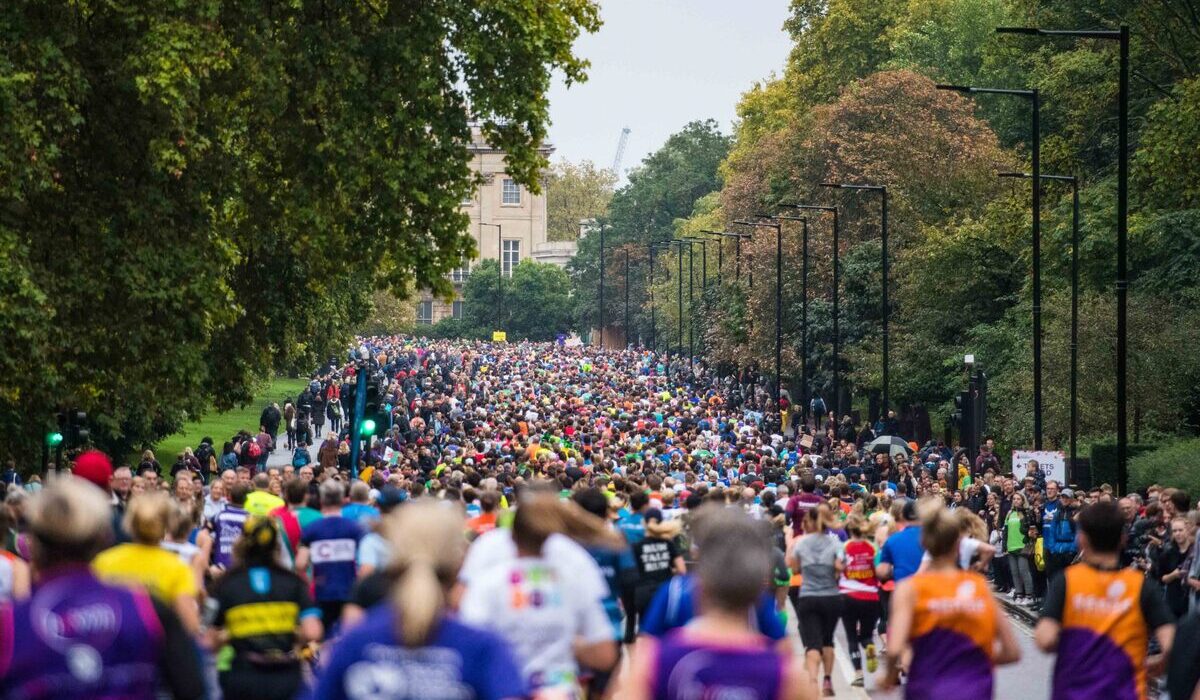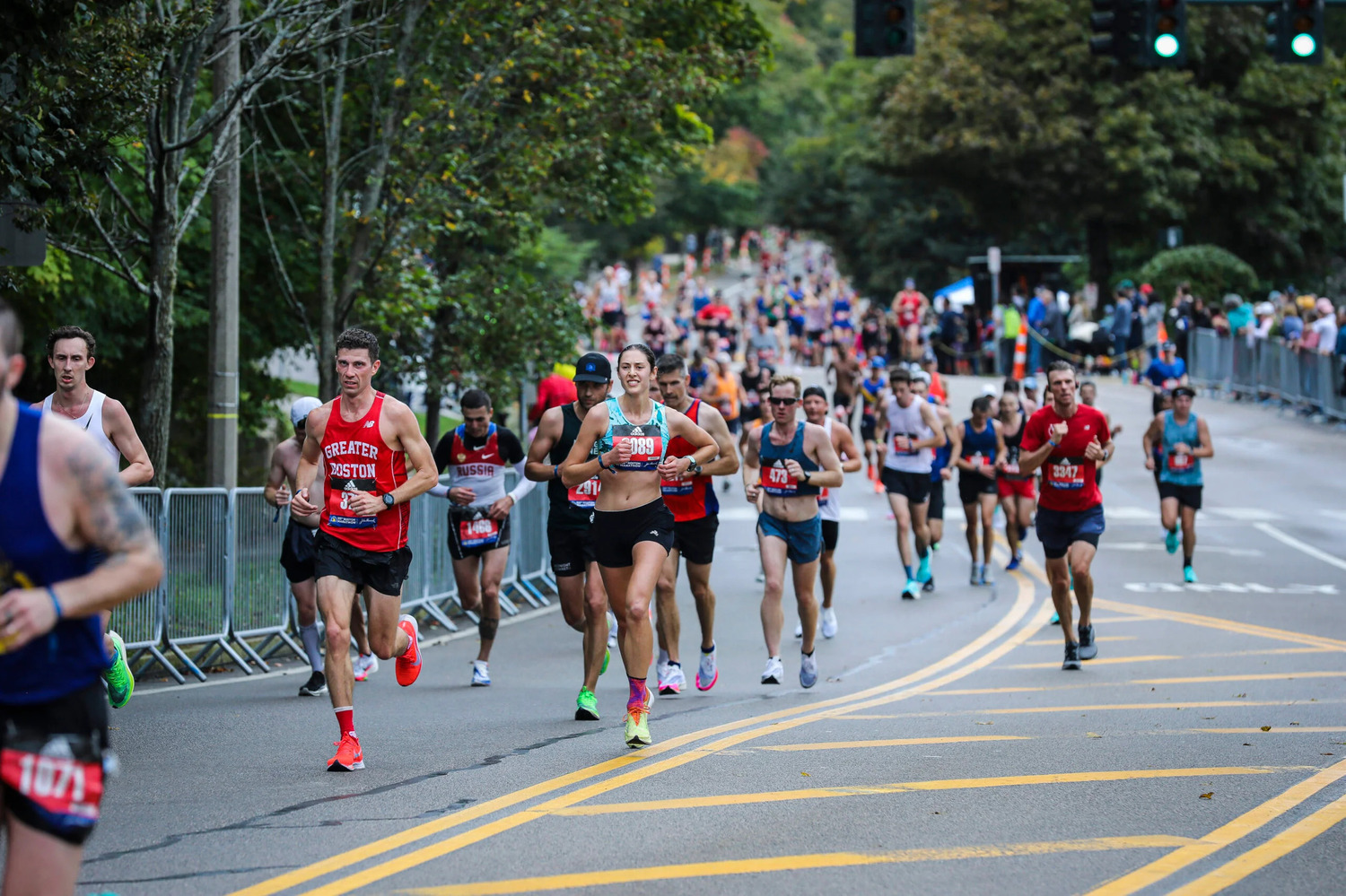

Featured
How Many Miles Are In A Marathon?
Modified: January 22, 2024
Discover the answer to "how many miles are in a marathon" in this featured article. Get all the information you need to understand the distance of a marathon.
Introduction
Welcome to the world of marathons! Whether you’re a seasoned runner, a fitness enthusiast, or simply curious about this long-distance event, you’ve come to the right place. In this article, we will delve into the fascinating world of marathons, exploring everything from the history and standard distance to the fastest recorded times and factors that can affect the length of a marathon course.
A marathon is a remarkable test of human endurance and determination. It is a race that covers a distance of 26.2 miles or 42.195 kilometers, typically run on roads or a combination of roads and trails. The marathon holds a special place in the sporting world, attracting athletes from around the globe to compete and push their physical limits.
The history of marathons can be traced back to ancient Greece, where the legendary story of Pheidippides, a Greek messenger, inspired the creation of this arduous race. According to the legend, Pheidippides ran from the city of Marathon to Athens to deliver the news of a victorious battle. Upon reaching Athens, he exclaimed, “We have won!” before collapsing and succumbing to exhaustion.
Fast forward to the modern era, and the marathon has become a widely recognized and highly anticipated event in the world of sports. It is a spectacle that brings communities together, attracting both elite athletes and amateur runners who aim to challenge themselves and accomplish a personal goal.
The international running community recognizes the standard distance of a marathon as 26.2 miles or 42.195 kilometers. This specific distance was established during the 1908 London Olympics when the race course was lengthened to allow the race to start at Windsor Castle and finish in front of the royal box in the Olympic Stadium.
However, it’s important to note that marathon courses can vary slightly in length due to factors like course design and logistics. Organizers must adhere to certain guidelines and regulations to ensure the race’s integrity and maintain its historical significance.
In the following sections, we’ll explore how the marathon distance is measured and converted into other units, understand the intricacies of marathon courses, uncover the fastest recorded times, and examine the factors that can affect the length of a marathon. So, fasten your seatbelts and get ready for an exhilarating journey into the heart of the marathon world!
What is a Marathon?
A marathon is a long-distance race with a total distance of 26.2 miles or 42.195 kilometers. It is a grueling endurance event that tests the physical and mental capabilities of participants. The origins of the marathon can be traced back to ancient Greece, where it is said to have been inspired by the legendary run of Pheidippides.
A marathon is not just another race; it is a symbol of human achievement and determination. It requires months of dedicated training and preparation to build the endurance required to complete the distance. Participants often set personal goals, aiming to beat their previous times or simply finish the race.
The marathon has a unique appeal that attracts people from all walks of life. It is not limited to professional athletes; anyone with the determination and perseverance can take part. Participants range from elite runners competing for a podium finish to recreational runners who see it as a personal challenge.
Marathons are held all around the world, with major cities hosting their own iconic races. Some of the most renowned marathons include the Boston Marathon, the New York City Marathon, the London Marathon, and the Berlin Marathon. These events draw thousands of participants and spectators, creating an electric atmosphere that fuels the runners’ motivation.
Marathons are often accompanied by a sense of community and camaraderie. Runners gather before the race, sharing stories and exchanging tips. The support of spectators along the course is invaluable, providing encouragement and cheering the participants on. Crossing the finish line of a marathon is a moment of triumph and celebration.
Marathons have evolved over time and now encompass a wide range of categories, including wheelchair marathons, handcycle marathons, and even virtual marathons. These variations allow individuals with different abilities and circumstances to participate and experience the incredible journey of completing a marathon.
Participating in a marathon is not only a physical challenge but also a mentally demanding task. It requires discipline, perseverance, and a strong will to push through fatigue and overcome obstacles along the way. The sense of accomplishment that comes with crossing the finish line is unparalleled and leaves participants with a lasting sense of pride.
Marathons have become more than just a race; they embody the human spirit of determination and resilience. Whether you’re a runner seeking a personal challenge or a spectator cheering on the participants, marathons offer a unique and inspiring experience that captures the essence of the human pursuit of excellence.
History of Marathon
The history of the marathon can be traced back to ancient Greece, where the legendary tale of Pheidippides inspired the creation of this iconic long-distance race. According to ancient accounts, Pheidippides was a Greek messenger who ran from the city of Marathon to Athens to deliver news of a military victory. The distance covered during his run became the inspiration for the modern-day marathon.
The most famous version of this account dates back to the Battle of Marathon in 490 BCE. The Persians had invaded Greece, and the Athenians, outnumbered and fighting to protect their land, achieved an unexpected victory. It is said that Pheidippides was dispatched to run from the battlefield at Marathon to Athens, a distance of approximately 26 miles, to deliver the news of the victory.
According to the ancient historian Herodotus, Pheidippides completed his run from Marathon to Athens in a single day, arriving in the city to deliver the pivotal message of triumph. Legend has it that upon reaching Athens, he exclaimed, “We have won!” before collapsing and dying from exhaustion.
The story of Pheidippides’ run gained further prominence through the writings of the ancient Greek historian Plutarch. His accounts solidified the heroic nature of the feat and established the foundation for the modern marathon race.
Interest in reviving the ancient marathon took hold in the late 19th century. The idea was to recreate the legendary run and honor the achievements of Pheidippides and the ancient Greeks. Inspired by the ancient accounts, the marathon distance of 26.2 miles was established for the first modern Olympic Games held in Athens in 1896.
The marathon event during the 1896 Olympics, from the peaceful town of Marathon to the Panathenaic Stadium in Athens, captured the imagination of the world. Spiridon Louis, a Greek water carrier, became the first-ever Olympic marathon champion, forever etching his name in Olympic history and solidifying the marathon’s place as one of the most prestigious events in athletics.
Since then, the marathon has become a staple in the Olympic Games and a highly anticipated event in major cities around the world. The Boston Marathon, established in 1897, is the oldest annual marathon and has cultivated its own rich history. Today, thousands of marathons are held globally, celebrating the ancient legacy of endurance and human achievement.
The marathon race has evolved over the years, with advancements in training methods, technology, and professional athletes pushing the boundaries of human performance. Record-breaking times, inspiring stories of triumph, and a deep appreciation for the history and symbolism of the marathon continue to captivate runners and spectators alike.
The story of Pheidippides’ mythical run from Marathon to Athens lives on through the modern marathon, honoring the spirit of determination, strength, and resilience that lies within us all.
Standard Marathon Distance
The standard distance of a marathon is 26.2 miles or 42.195 kilometers. This specific distance was established during the 1908 London Olympics and has since become the universally recognized measurement for marathons around the world.
The 1908 London Olympics saw a unique turn of events that led to the marathon distance being extended. Originally, the race was planned to start at Windsor Castle and finish at the Olympic Stadium in London, covering a distance of around 25 miles. However, to ensure the race began in front of the royal box, an additional 385 yards were added at the start. This seemingly small adjustment ended up making a lasting impact on the marathon distance.
The extra distance meant that the marathon suddenly became 26.2 miles long, much to the surprise of the participating athletes. The decision was made to maintain this new distance as the official measurement for future marathon races. The change was met with widespread acceptance, and the 26.2-mile marathon distance became synonymous with the event.
The adoption of the standard marathon distance was further solidified by the International Association of Athletics Federations (IAAF), the global governing body for the sport of athletics. The IAAF officially recognized the 42.195-kilometer distance as the standard for marathons in 1921.
Why was the distance not simply rounded to an even 26 miles? The additional 0.2 miles were added to ensure that the marathon race started in front of the royal box at the London Olympic Stadium. This decision has left a lasting legacy, making the marathon distance unique and recognizable to this day.
The 26.2-mile distance has become an iconic measurement associated with marathons worldwide. It is a physical and mental challenge that has captivated the imaginations of runners and spectators alike. The distance requires careful pacing, endurance, and determination to complete. Crossing the finish line of a marathon is an achievement that symbolizes both personal triumph and a testament to the resilience of the human spirit.
While variations in route design and logistical considerations may result in slight deviations from the standard distance, race organizers ensure that the integrity and historical significance of the marathon distance are maintained.
Today, the standard marathon distance of 26.2 miles continues to inspire runners to push their limits, transcend boundaries, and achieve their personal goals. It serves as a unifying element for marathon runners around the world, binding them through the shared experience of conquering this iconic distance.
Conversion of Marathon Distance in Other Units
The standard distance of a marathon is 26.2 miles or 42.195 kilometers. However, for those who are more familiar with different units of measurement, it can be helpful to understand how the marathon distance converts to other common units.
In terms of length, the marathon distance is equivalent to approximately 23.8 nautical miles, 138,435 feet, or 16,562,560 inches. These conversions provide alternative perspectives on the sheer magnitude of the marathon distance and how it can be expressed using different units of measurement.
For those who prefer metric units, it is worth noting that the marathon distance of 42.195 kilometers is equivalent to 25,999 fathoms, 2,621,950 centimeters, or 26,219.5 meters. These conversions highlight the distance covered during the course of a marathon and emphasize the physical and mental endurance required to complete the race.
Additionally, the marathon distance can also be expressed in terms of time. Elite marathon runners often strive to complete the race in under two hours, an incredible feat that requires an average pace of approximately 4 minutes and 35 seconds per mile or 2 minutes and 51 seconds per kilometer. This level of speed and endurance represents the pinnacle of marathon running.
Converting the marathon distance into various units allows us to appreciate the magnitude and challenge that runners face during this iconic race. Whether it’s visualizing the distance in miles, kilometers, feet, inches, or even as a measure of time, these conversions offer different perspectives on the journey that marathon runners embark upon.
It’s important to remember that while the marathon distance can be expressed in different units, the standard measurement of 26.2 miles or 42.195 kilometers remains the universal benchmark for marathons around the world. This standardized distance ensures that races conducted globally adhere to the historical and cultural significance of the marathon.
Understanding the conversion of the marathon distance into other units allows us to relate to the physical and mental challenge that marathon runners undertake. It provides a glimpse into the incredible feat of endurance and determination required to complete the race, regardless of the unit of measurement used.
Understanding the Marathon Course
The marathon course plays a crucial role in the overall experience of the race. It can range from paved roads in urban areas to scenic routes through countryside or even challenging trails in mountainous terrains. Understanding the course is essential for marathon runners, as it allows them to plan their strategies, anticipate challenges, and mentally prepare for the race.
Marathon courses are carefully designed to ensure the safety of the participants and to showcase the unique features of the host city or region. They typically start and finish in prominent locations, such as city centers or iconic landmarks, providing a memorable setting for both runners and spectators.
There are different types of marathon course layouts, each with its own characteristics. The most common types include loop courses, point-to-point courses, and out-and-back courses.
In a loop course, runners start and finish at the same location, completing one or more laps to cover the total distance. This type of course allows participants to pass through the same areas multiple times, potentially providing familiar landmarks and cheering supporters along the way.
A point-to-point course involves starting at one location and finishing at another. This type of course offers runners the opportunity to experience different neighborhoods, scenery, and terrain as they progress towards the finish line.
The out-and-back course features a route where runners travel in one direction for half of the distance, and then return along the same route to reach the finish line. This type of course allows participants to see their fellow runners, providing a sense of camaraderie and motivation.
Course elevation plays a significant role in marathon races. Some courses are known for their flat and fast routes, ideal for runners aiming for a personal best or attempting to qualify for prestigious races. Other courses may feature challenging inclines and declines, adding an extra level of difficulty to the race.
Weather conditions also play a part in marathon courses. Some races may take place in extreme environments, such as desert marathons or cold-weather races. These factors can impact the performance of runners, making it necessary to adapt training and race strategies accordingly.
Organizers take great care in marking the course to guide runners along the designated route. This typically involves clear signage, course marshals, and aid stations offering water, sports drinks, and nutrition to support participants throughout the race.
Understanding the marathon course is not only important for runners but also for spectators and supporters. Knowing the layout of the course allows them to strategically place themselves along the route to cheer on their loved ones and provide encouragement at specific points.
Ultimately, the marathon course is an integral component of the race experience. It showcases the unique characteristics of the host city or region and plays a significant role in the physical and mental challenges that runners face. Appreciating the course and its intricacies adds to the overall excitement and admiration for the marathon as an extraordinary test of endurance and determination.
Fastest Marathon Times
The pursuit of breaking records and achieving faster marathon times has been ongoing since the establishment of the marathon as a competitive race. Over the years, elite athletes have pushed the boundaries of human performance, setting impressive records and inspiring future generations of marathon runners.
The current men’s world record for the marathon is an incredible 2 hours, 1 minute, and 39 seconds, set by Eliud Kipchoge of Kenya in 2020 at the London Marathon. Kipchoge’s record-breaking run astonishingly surpassed the two-hour barrier, a feat once thought to be unreachable. Although his time was achieved under special conditions with the aid of pacemakers, Kipchoge’s record showcases the extraordinary levels of endurance, speed, and dedication of elite marathon runners.
On the women’s side, Brigid Kosgei of Kenya currently holds the world record with a time of 2 hours, 14 minutes, and 4 seconds. She set this remarkable record at the Chicago Marathon in 2019, knocking more than a minute off the previous record. Kosgei’s performance highlights the incredible strength and talent of female marathon runners and their ability to compete at the highest level.
These records represent the pinnacle of human achievement in marathon running, but other notable performances also deserve recognition. Each year, major marathons around the world witness impressive finishes and personal bests by both professional and amateur runners.
It’s not just the elite athletes who strive for faster marathon times. Runners of all levels continuously challenge themselves to beat their personal bests, whether it’s aiming for a specific time, qualifying for prestigious races, or simply setting and achieving personal goals.
Advancements in training methods, nutrition, technology, and scientific knowledge have contributed to the pursuit of faster marathon times. Athletes now have access to cutting-edge resources that help enhance their performance and optimize their training approaches. This combination of talent, dedication, and support has led to the continuous improvement of marathon times over the years.
It’s important to note that while breaking records is a remarkable achievement, every runner’s journey and experience in the marathon is unique and should be celebrated. Completing a marathon, regardless of the time, requires perseverance, mental fortitude, and a deep commitment to training.
The pursuit of faster marathon times will always be a driving force in the world of marathon running. As new generations of athletes emerge and technological advancements continue to evolve, it’s likely that marathon records will continue to be broken, inspiring future runners to push the limits and strive for new levels of excellence.
Factors Affecting Marathon Distance
While the standard distance of a marathon is 26.2 miles or 42.195 kilometers, there are several factors that can affect the actual distance of a marathon course. These factors can lead to slight variations in the measured distance, ensuring that race organizers adhere to certain guidelines and regulations to maintain the integrity and historical significance of the marathon.
Course Design: The design of the course plays a crucial role in the distance of a marathon. Race organizers carefully plan the route, taking into account various factors such as landmarks, road closures, logistics, and safety. Sometimes, these considerations may require slight adjustments to the course, resulting in differences in the measured distance.
Measurement Techniques: Precision in measuring marathon courses is of utmost importance. Traditionally, courses have been measured using a calibrated bicycle wheel, known as a Jones Counter, which captures the distance as it rolls along the route. Today, more advanced methods, such as GPS technology and laser measurement tools, are also used to ensure accuracy. However, even with these tools, there can still be slight discrepancies in the measurements.
Tangents and Racing Line: Runners often aim to take the shortest possible route during a race. However, due to the nature of crowded races and the need to navigate turns and corners, it is common for participants to cover a slightly greater distance than the measured course. This additional distance can vary depending on factors such as the number of turns, the density of runners, and the specific course layout.
Course Certification: To ensure the accuracy of the marathon distance, many races undergo a certification process. The course is measured according to specific guidelines set by governing bodies such as the Association of International Marathons and Distance Races (AIMS) and the International Association of Athletics Federations (IAAF). Courses that meet the certification requirements are considered legitimate and able to produce official marathon times for participants.
Environmental Conditions: Weather conditions and environmental factors can also impact the measured distance of a marathon course. Extreme weather conditions, such as strong winds or heavy rain, can lead to changes in the course and result in variations in the distance covered. Additionally, elevation changes or challenging terrain may affect the overall length of the race.
It’s important to recognize that while these factors can result in slight deviations in the measured distance, race organizers strive to provide accurate course measurements. Their aim is to ensure the marathon distance is as consistent as possible, allowing runners to compare their performances across different races and achieve personal goals.
Understanding the various factors that can affect the marathon distance allows participants and spectators to appreciate the intricacies of race organization and measurement. Regardless of these variations, the marathon remains a symbol of endurance and remarkable human achievement, challenging individuals to go beyond their limits and experience the incredible journey of completing 26.2 miles.
Conclusion
The marathon is a remarkable test of human endurance and determination. It is a race that spans a distance of 26.2 miles or 42.195 kilometers, attracting athletes and enthusiasts from around the world. The history of the marathon is rooted in ancient Greece, where the legendary run of Pheidippides inspired the creation of this iconic event.
Since its inception, the marathon has evolved into a globally recognized and highly anticipated race, with major cities hosting their own prestigious events. Runners train rigorously, pushing their physical and mental limits to accomplish personal goals and experience the incredible sense of achievement that comes with crossing the finish line.
The marathon is not only a physical challenge but also a testament to the human spirit. It symbolizes determination, resilience, and the pursuit of excellence. Whether it’s breaking records, achieving personal bests, or simply experiencing the journey, the marathon offers an unforgettable experience for participants and spectators alike.
While the marathon distance remains consistent, variations in course design, measurement techniques, tangents, and environmental conditions can lead to slight deviations in the measured distance. Despite these factors, race organizers strive to ensure the integrity and historical significance of the marathon, maintaining standards and certifications to provide accurate and comparable race experiences.
The pursuit of faster marathon times continues to drive athletes to push the boundaries of human performance. Elite runners continue to shatter records, inspiring future generations to aim higher and accomplish even greater feats. However, every runner’s journey is unique and should be celebrated, emphasizing personal achievements and the incredible dedication required to complete a marathon.
In conclusion, the marathon is more than just a race. It represents the indomitable human spirit, the triumph of perseverance, and the celebration of human potential. Whether you are a participant striving for a personal goal or a spectator cheering on the runners, the marathon embodies the power of the human spirit and exemplifies the pursuit of extraordinary achievement.
